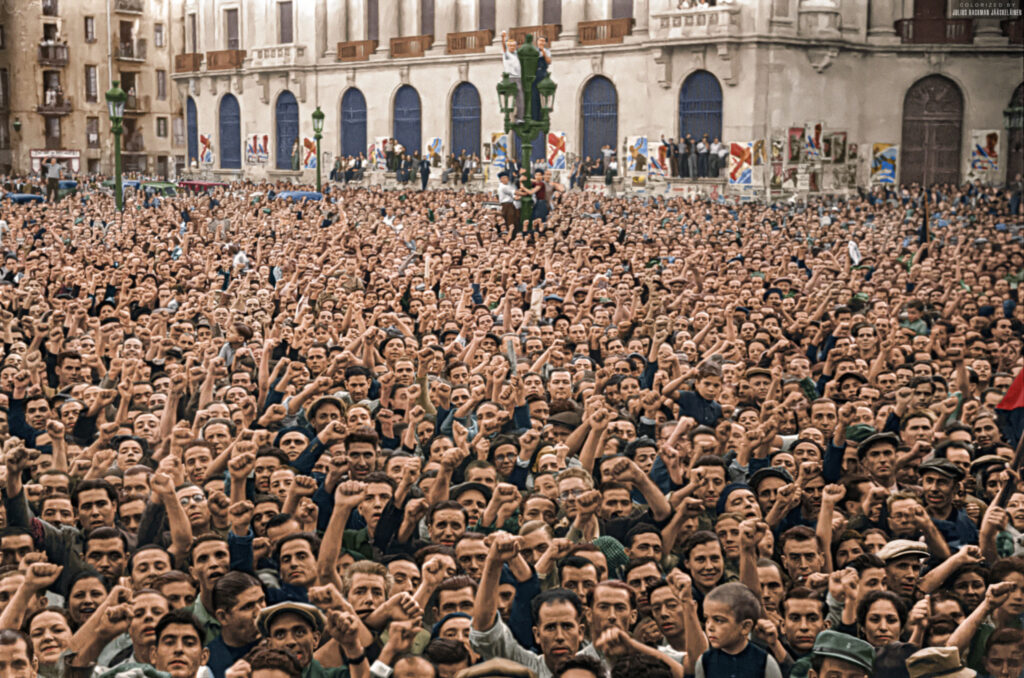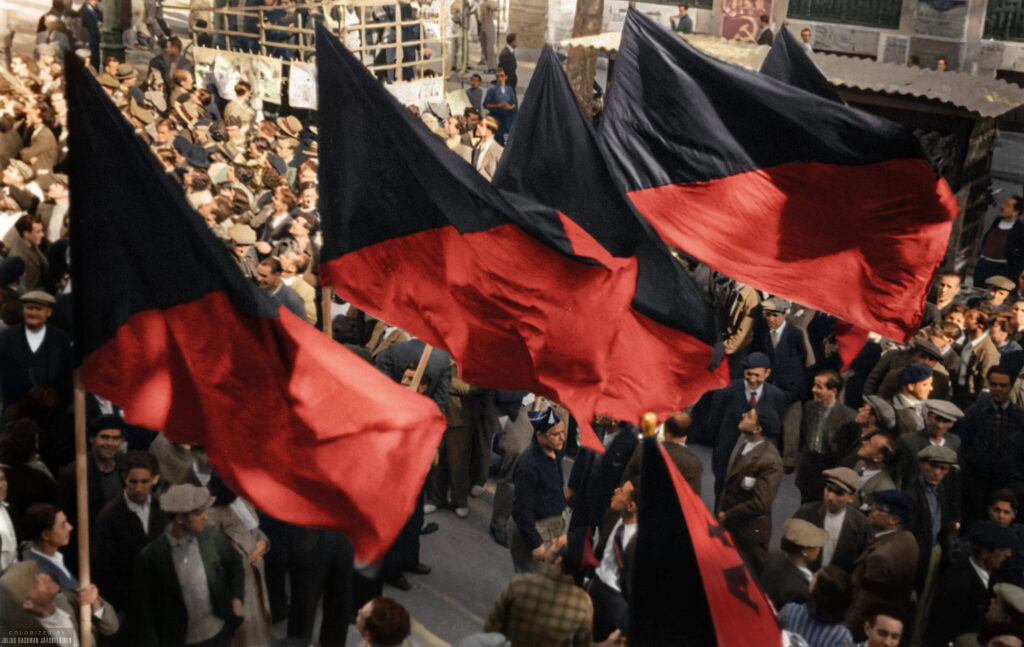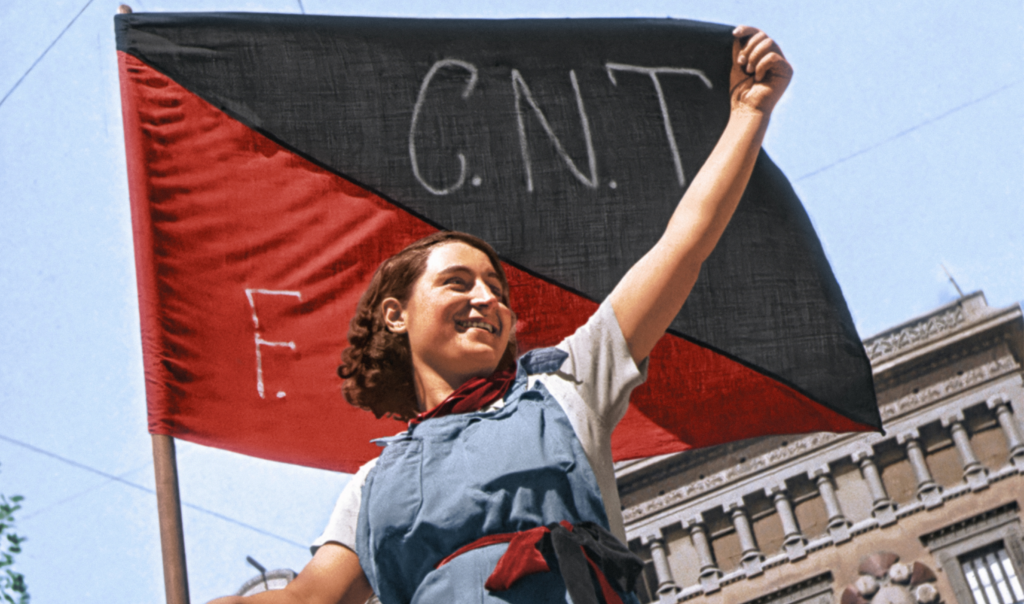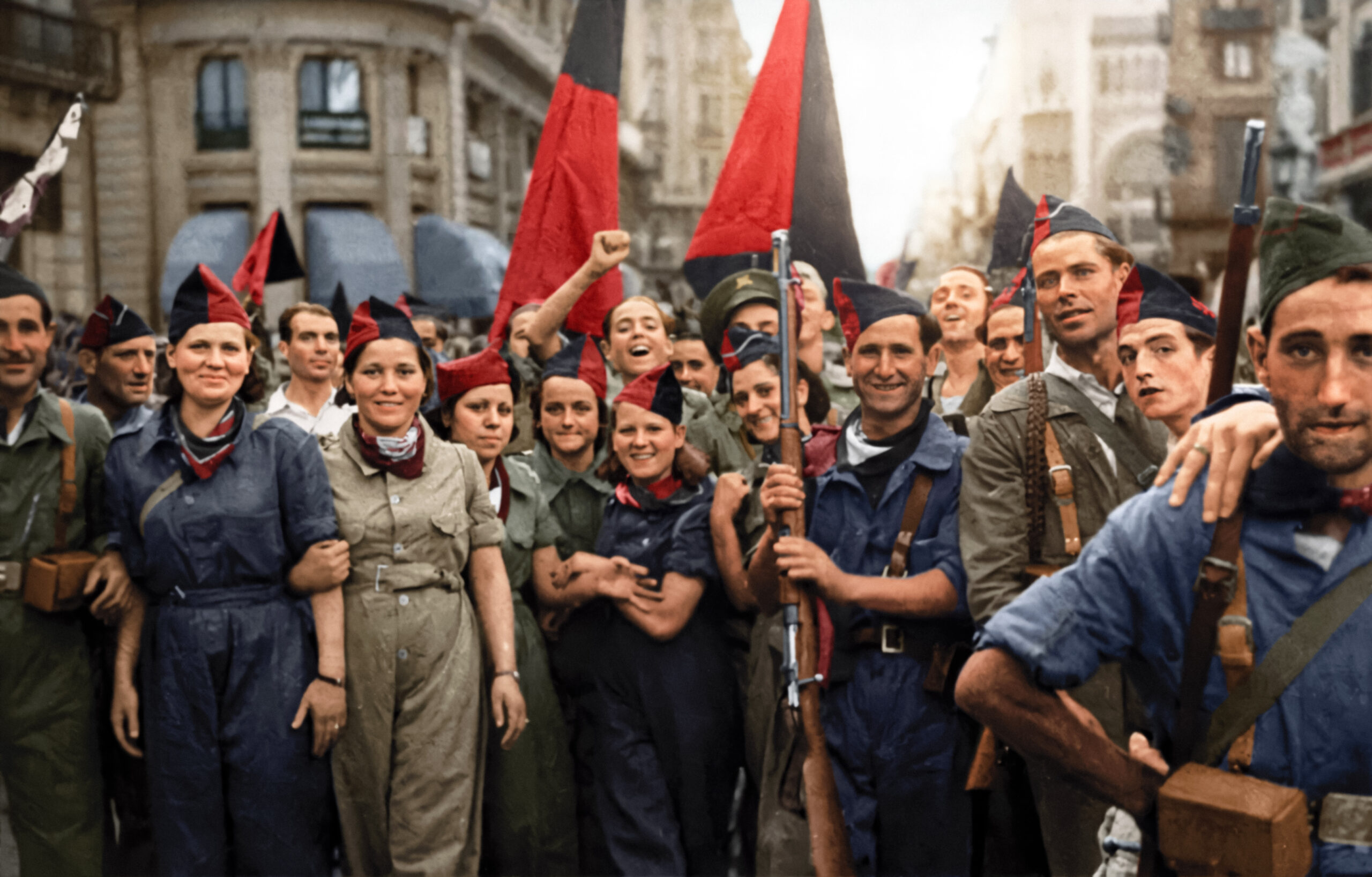During the Spanish Civil War (1936-1939), anarchist and socialist groups in Republican-controlled areas established agricultural and industrial collectives. These collectives aimed to create a society based on mutual aid, self-management, and communal ownership, where resources and labor were shared for the benefit of all. It was a mutual aid based economy, where the economic instruments of society were based on universalising the practice of mutual aid.
Before the civil war, the anarchist movement could be said to be a large mutual aid organisation. The CNT-FAI was always more than a trade union. It could be found in every aspect of working-class life; in its social activities, in its literature and culture, in its education and relationships.
“The CNT was part and parcel of a network of solidarity and action that encompassed every facet of the life of the workers, whether social or cultural, family-centered, recreational, political, or trade union related. That network was made up of the barrio unions, the ateneos, the rationalist schools, cooperatives, the economic defense committee (which resisted evictions), affinity groups, defense groups (coordinated at barrio level, rising to district and then citywide levels), making up, in everyday practice a sturdy and effective autonomous society based on solidarity, with a set of values different from capitalist values.”- Agustín Guillamón
17th July 1936
A right wing coup was launched against the Spanish Republic. In only 3 days the rising was defeated in the major cities, provoking a revolutionary moment in the republican zones, especially in Catalonia. There existed a vacuum of state power, as the republican state was paralysed and shattered in the places where the right-wing coup was unsuccessful.
Hundreds of 6-person neighbourhood defence cadres of the anarcho-syndicalist CNT had been crucial in defeating the rising in Catalonia. In the days following the rising, they underwent a dual transformation, first into Popular Militias, which set off to fight the fascists, and instigated the collectivisation of land in the villages of Aragon, then into revolutionary committees in each neighbourhood of Barcelona, and the villages and towns of Catalonia and the surrounding area.
In Barcelona these neighbourhood committees- “federation of the barricades”- constituted the only real power at this time. They organised hospitals, set up people’s kitchens and requisitioned vehicles, weapons and buildings, initiated industrial and agricultural collectivisation, organised popular militias, formed patrols, populated the barricades which controlled traffic, converted churches into schools and warehouses and created a network of provisioning committees in every neighbourhood. They also issued vouchers, travel passes, marriage ceremonies, financed rationalists’ schools, newspapers and cultural centres, paid militiamen etc. They had complete power, and were supported by most of the population, as a revolutionary spirit affected all parts of society.

However, there was a conflict within the Spanish anarchist movement. The Nosotros group (Durruti, García Oliver, Ascaso etc.) clashed with the rest of the FAI over the question of power in early 1936, when it was clear a rightist coup was coming. The rest of the FAI had dismissed the Nosotros group as advocating “anarchist dictatorship” when they argued for taking power. But following the rising, the anarchists had complete control in Catalonia- which was recognized by Lluís Companys (President of the Catalan government) in a meeting with Durruti, Garcia Oliver and Sanz on 20 July- who asked what they were going to do, given they had control of the situation. This delegation of 3 believed the Catalan government should be overthrown, but they told Companys they would have to see what the rest of their organisation said.
On the 21st, the anarchists at a plenum voted to reject seizing power, which was construed as the dictatorship of anarchist leaders rather than the institutionalisation, coordination, and extension of the power that the revolutionary committees already had at street level. Murray Bookchin’s interpretation argues that the power they had needed to be institutionalised – by smashing the old state and turning the committees into workers’ councils, who would send recallable delegates to assemblies to coordinate on a regional and national level- a (directly democratic and grassroots) confederalist polity of workers, militias and peasant councils. This would have meant the whole of the working class ruling directly through a confederalist model, rather than a small group of political parties.

Instead, they opted to leave the state intact and collaborate in its reconstruction and growth of power. In September 1936 the anarchists joined the government of Catalonia, and in November they joined the national government, with 4 ministers (Justice, Commerce, Health and Public Assistance and Industry)
The state gradually undermined the revolution. This came to a head in May 1937, where the CNT-FAI, the Libertarian Youth, the POUM and the Friends of Durruti Group faced off against state forces in Barcelona. The Friends of Durruti argued for a federation of councils, and union control of the economy as the basis for a revolutionary polity- to finish the revolution that began in July. However, they were defeated, which allowed the destruction of the organs of revolutionary power, and the breaking up of worker control of factories and rural collectives- driven in large part by the Communist party.
“I had dropped more or less by chance into the only community of any size in Western Europe where political consciousness and disbelief in capitalism were more normal than their opposites. Up here in Aragon one was among tens of thousands of people, mainly though not entirely of working-class origin, all living at the same level and mingling on terms of equality. In theory it was perfect equality, and even in practice it was not far from it. There is a sense in which it would be true to say that one was experiencing a foretaste of Socialism, by which I mean that the prevailing mental atmosphere was that of Socialism. Many of the normal motives of civilized life — snobbishness, money-grubbing, fear of the boss, etc. — had simply ceased to exist. The ordinary class-division of society had disappeared to an extent that is almost unthinkable in the money-tainted air of England; there was no one there except the peasants and ourselves, and no one owned anyone else as his master. Of course such a state of affairs could not last. It was simply a temporary and local phase in an enormous game that is being played over the whole surface of the earth. But it lasted long enough to have its effect upon anyone who experienced it. However much one cursed at the time, one realized afterwards that one had been in contact with something strange and valuable. One had been in a community where hope was more normal than apathy or cynicism, where the word ‘comrade’ stood for comradeship and not, as in most countries, for humbug. One had breathed the air of equality. –George Orwell, Homage to Catalonia
The mutual aid economy
Despite the fragility of the revolutionary situation, which lasted for a little under a year, it is often held up as one of the most far-reaching revolutions in world history. Estimates say around 8 million people participated in a revolution which created decentralised and horizontal federations of participatory industrial and service collectives and agrarian communes. In Catalonia, where 2/3 of Spanish industry was, around 80% of businesses were placed under workers’ self-management, coordinated through industrial councils using a decentralised planning model. Most collectives reduced wage differentials, and established pension schemes, medical services and nurseries. Emma Goldman claimed that productivity in industry almost doubled, whilst agricultural yields increased from between 30-50%.
In the countryside, the revolution went much further. In many villages, money was abolished, and free supply established, with an economy entirely based on mutual aid. By 1937 there were 1,500 rural collectives, involving 1.5 million people. Schools, cultural centres and literacy campaigns were often launched within collectives. As with industry, at a regional and national level collectives were coordinated through federations and associations organised through unions, using a confederalist model. In eastern Aragon, the Regional Defence Council of Aragon coordinated village collectives- an anarchist autonomous government inside the republican zone.
According to Agustin Guillamón, Danny Evans, Tom Wetzel and Murray Bookchin the main problem for the Spanish revolution was a slowly reconstructed state, which was gradually becoming dominated by Stalinists, which undermined it and would ultimately destroy the revolution (and lose the war). According to this view, the dichotomy between “anarchist dictatorship” vs collaboration with reconstruction of the shattered state was false. The choice was instead between collaboration and a new governance structure based on grassroots committee’s and direct democracy- something the anarchists were unwilling to create. By refusing to build a new power, they helped reconstruct the old one- which would ultimately destroy them and fail to win the war against fascism. As Bookchin argues, the lesson of Spain is that its not possible to remove power or ignore power, but it is possible to give it an institutional emancipatory form.
Ultimately the republic lost to Franco’s brutal regime. This regime carried out brutal reprisals against leftists, killing hundreds of thousands with impunity, the legacy of which Spain has not properly come to terms with.
Resources
- Felix Carrasquer- The Agricultural Collectives of Aragon
- Sam Dolgoff- The Anarchist Collectives: Workers’ Self-Management in the Spanish Revolution 1936-39
- Gaston Leval- Collectives in the Spanish Revolution
- Augustin Souchy- With the Peasants of Aragon. Libertarian Communism in the Liberated Areas

